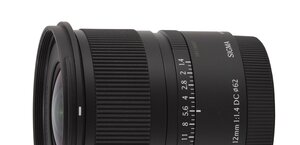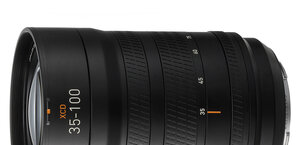Nikon Nikkor Z 600 mm f/6.3 VR S
3. Build quality and image stabilization
In the photo below the Nikkor Z 600 mm f/6.3 VR S is positioned between the reflex camera Sigma A 35 mm f/1.4 DG HSM and the Voigtlander Apo-Lanthar 2/50.
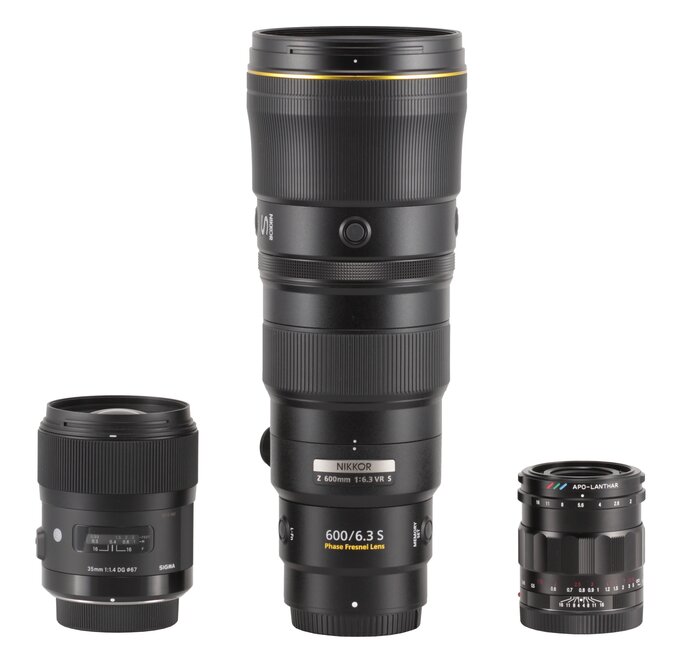 |
Please Support UsIf you enjoy our reviews and articles, and you want us to continue our work please, support our website by donating through PayPal. The funds are going to be used for paying our editorial team, renting servers, and equipping our testing studio; only that way we will be able to continue providing you interesting content for free. |
- - - - - - - - - - - - - - - - - - - - - - - - - - - - - - - - - - - - - - - - - - - - - - - -
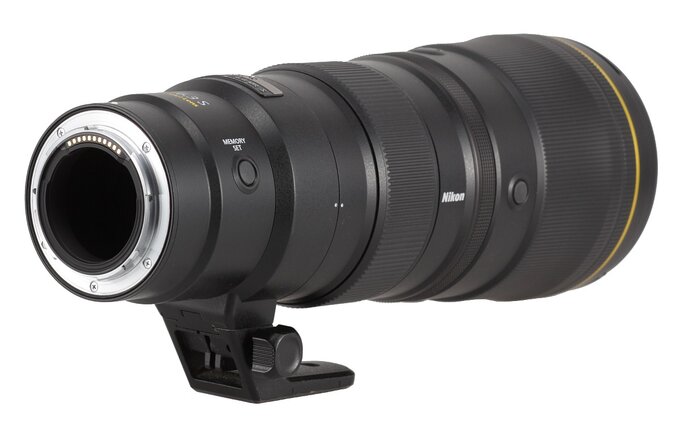 |
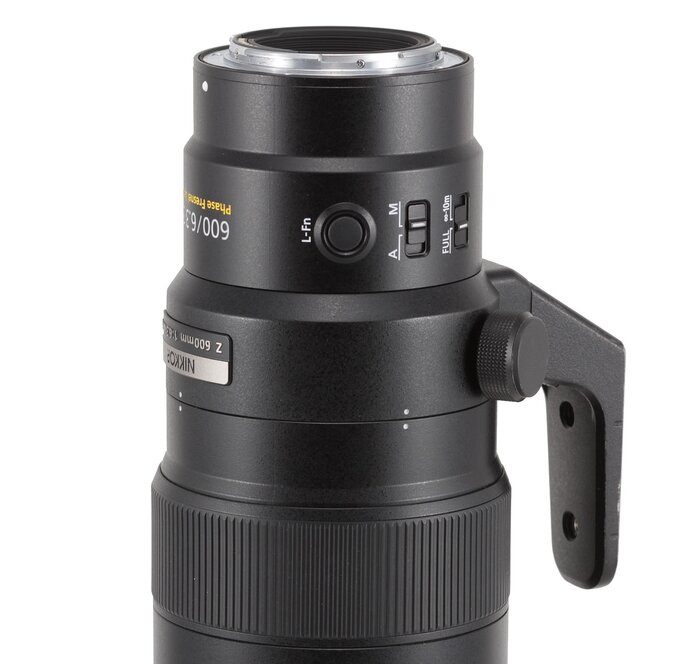 |
Further on you see another immobile part of the barrel and behind it you find a manual focus ring. The ring is 36 mm wide, completely covered by rubber ribs. It is a focus-by-wire construction so it comes without any distance or/and depth-of-field scale. It moves quite smoothly, and its focus throw amounts to an angle of about 140-150 deg. That value might increase distinctly if you turn the ring slower; anyway it allows you very precise settings.
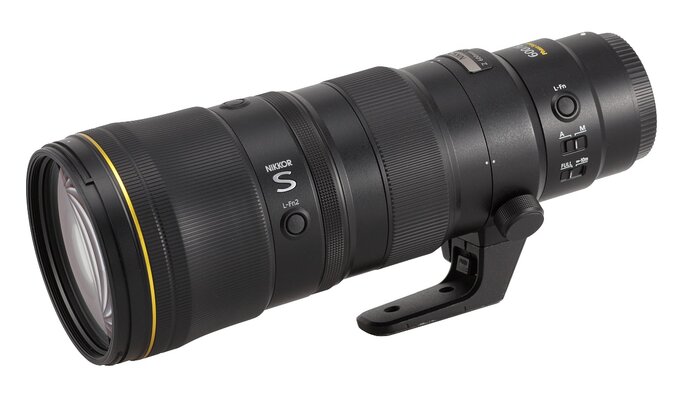 |
Further on, there is an immobile part of the barrel with another function ring, L-Fn2, and three other plain buttons that lock the autofocus mechanism in place. Next to them you see an inscription 'Nikkor S'.
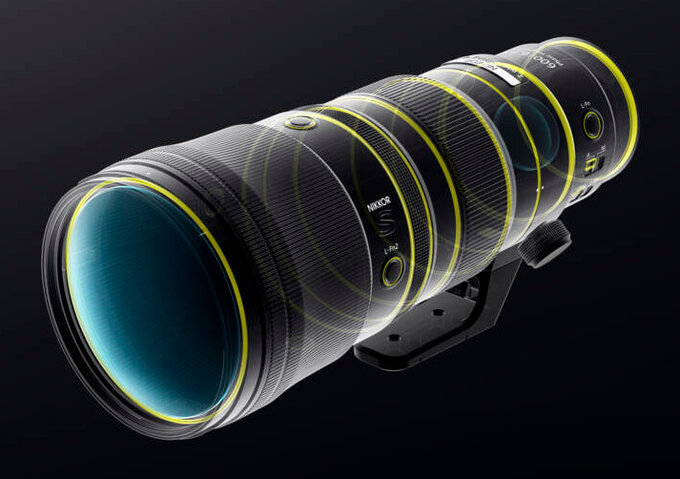 |
The front element is relatively flat, immobile, 89 mm in diameter. It is surrounded by a non-rotating filter thread, 95 mm in diameter, and a hood mount for a hood that is added to the accessory kit.
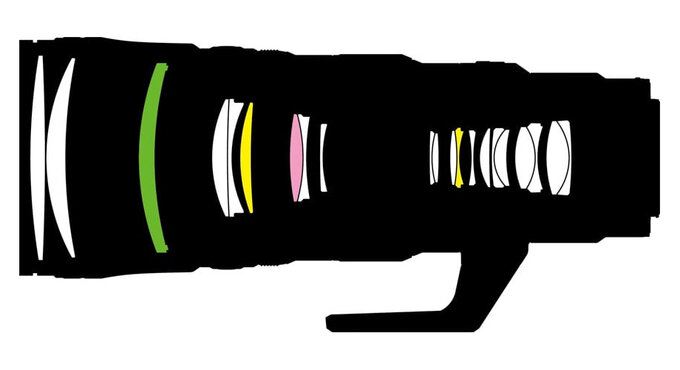 |
The producers also boast of sealing that protects the instrument against harsh weather conditions – all movable elements are secured by rubber seals preventing dust, dirt and humidity to invade the interior. A Nikon hydrophobic fluorine coating protects the outer optical element of the lens and is supposed to make it easier to clean.
Buyers get in the box: both caps, a tripod adapter, a soft pouch and a hood. I admit at this price-point you would expect also a solid, hard case being delivered with the lens. The soft pouch, included in the box, doesn't protect it practically at all as it is really more like a piece of cloth. Kupujący dostaje w zestawie oba dekielki, łącznik statywowy, miękki futerał oraz osłonę przeciwsłoneczną. W tej klasie cenowej oczekiwalibyśmy oferowania w zestawie solidnego, sztywnego futerału. To, co dostajemy, zasługuje bardziej na miano ściereczki lub szmatki i w zasadzie nie zapewnia żadnych, poważniejszych funkcji ochronnych.
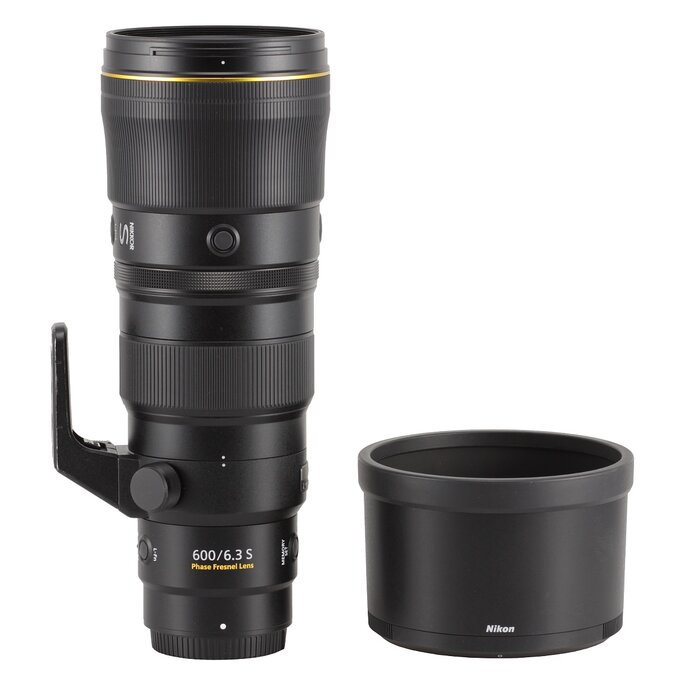 |
Optical stabilization
In the press release of the producer you can find information that optical stabilization of this lens might be as efficient as 5.5 EV or even 6 EV, if you attach the lens to a Z camera, with a synchronic VR system available.In order to check that claim we took several dozen photos with exposure times ranging from 1/800 to 1/8 of a second and the stabilization switched on and off. For every set of photos we determined a percentage of out-of-focus shots; then we presented it in a form of a graph of exposure time which was expressed in EV (with 0 EV being an equivalent of 1/640 of a second).

The maximum distance between both curves reaches a tad above 4 EV and such is, in our opinion, the real efficiency of the stabilization unit. As you see the result is distinctly short of these declared 5.5 EV but you have to remember that all results exceeding 4 EV we consider to be very good anyway, allowing you comfort during shooting.




